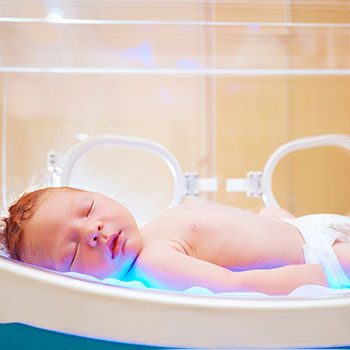
Birth Asphyxia(Hypoxic Ischaemic Encephalopathy)
Birth Asphyxia (Hypoxic Ischaemic Encephalopathy)
Hypoxic Ischaemic Encephalopathy (Birth Asphyxia) is defined as a lack of sufficient oxygen and blood perfusion to the brain, resulting in brain injury.
Pathophysiology
When a baby does not breath at birth, the oxygen supply to the brain cells called neurons is interrupted. This causes death of the neurons with its associated brain damage.
Clinical Presentation
- In children with HIE, the primary symptoms arise from the brain such as limpness, poor breathing, seizures, poor sucking among others.
- Other body organs may also be affected and show symptoms of damage such as coagulopathy (bleeding tendency), abnormal liver and kidney function / failure, low BP, lung failure.

Investigations
- Frequent neurological examination.
- Blood tests to identify other organ dysfunction
- Sepsis (infection) screen.
- EEG.
- Neurosonogram (brain scan)
- MRI of brain.
Prognosis (Outcome)
- Mild (stage I): Survival is expected. Some disability is expected.
- Moderate (stage 2) or Severe (Stage 3): These babies may or may not survive. About 20-25% of these babies do not survive. The disability rate is also higher.
Management
- Therapeutic hypothermia / cooling: To maintain core body temperature between 33-34C for 72 hours followed by gradual rewarming over 12 hours. Evidence shows that cooling of neonates with moderate to severe HIE is safe and reduces the risk of death or disability at 18 to 22 months of age.
- Other routine NICU management such as ventilator, oxygen, CPAP as needed.
- Fluid management, antibiotics and other medications as needed.
Follow-Up
All infants showing signs of HIE require developmental follow-up program and intervention as needed.